Draft report circulated to university faculty and students by Core Curriculum Review Committee
Notre Dame’s decennial core curriculum review committee (CCRC) released its initial draft report of recommendations to university faculty and students on Monday. The committee was appointed by University President John Jenkins, CSC, in the summer of 2014 to conduct a thorough review of the curriculum and, in consultation with faculty and students, present a set of proposed changes.
The proposed core curriculum structure would require six courses in the general liberal arts, with more student choice and a new, initially optional integration course. There would be four required courses in the explicitly Catholic dimension of the curriculum, consisting primarily of theology and philosophy.
The recommendations are all based on an application of “learning goals” to each area of study and a “ways of knowing” approach that takes into account the “various modes of thought that allow faculty and students to explore the world around them.”
The report noted that Notre Dame’s curriculum is distinguished by its Catholic character and, as a result of the Catholic academic community’s pursuit of truth, all disciplines contribute uniquely to the university’s mission.
The retention of the university’s requirements of two theology and two philosophy courses was a chief focus leading up to the draft report. The CCRC report—detailed further by the recommendations of the CCRC’s Catholic mission focus group—recommends a two-course theology requirement, a one-course philosophy requirement, and a fourth requirement that could be fulfilled by either a second philosophy course or a “Catholicism and the Disciplines” (CAD) course.
The report says of these two disciplines: “As central threads in the Catholic intellectual tradition, theology and philosophy have played and should continue to play a central role in Notre Dame’s core curriculum.”
The proposed CAD requirement “would further integrate the University’s distinctive mission across the curriculum” by requiring students “to engage faith questions or normative questions critically and constructively and should engage ideas central to the Catholic tradition from the perspective of one or more disciplines.”
These courses would enable students to speak intelligently about their faith as well as “explore topics in the disciplines from a distinctively Christian or Catholic framework.”
The recommendations for the general liberal arts portion of the core curriculum consisted of seven sections. First, quantitative analysis, which would be fulfilled by courses that apply mathematics in quantitative reasoning. Scientific and technical analysis courses “should train students to become questioning, critical thinkers by teaching them the thought processes with which scientists, engineers, and other inventors view the world.”
Aesthetic analysis courses would “help students develop their creativity and ability to innovate” and would consist of courses in disciplines like literature, painting, film, and architecture. Historical analysis should develop students’ “ability to understand and explain the interaction of continuity and change over time by using historical methods.” Such courses could be found in the history, classics, and American studies departments.
Social science inquiry would “introduce students to the diversity and complexities of different societies in the world and the research methods by which questions about human behavior and human interactions can be analyzed.” Anthropology, economics, political science, psychology, and sociology would satisfy such a requirement, but the report notes that collaborative courses for the requirement could be created by the law school or the Mendoza College of Business.
Advanced language and culture emphasizes the importance of foreign language “in our more globalized and yet multicultural world.” This course would give students the option to satisfy a core requirement in language following the intermediate level, which would involve work both with language competency and cultural content.
Finally, the report introduces an integration course that would not be required of students until its success or failure was evaluated. These courses would be “team-taught by faculty from two departments [and] must have as a primary goal the pursuit of knowledge that integrates and synthesizes the perspective of two or more disciplines to address a particular issue that is too complex to be adequately addressed by a single field of study.” Possible topics include sustainability and environmental issues, human development and poverty, diversity, or an enhancement of community-based learning.
A return to the university’s Catholic mission was a central theme found in the report. The committee recommended “a renewed commitment to distinctively Catholic dimensions within the liberal arts, an enhanced commitment to a broad liberal arts education, and the introduction of curricular innovations that foster the integration of disciplines.”
In particular, the document asserted that, “the University’s hiring strategies and investments to build faculty strength in intellectual areas consonant with the traditions of Catholicism … reflect a remarkable institutional commitment, one that should have more resonance in core curriculum requirements.”
The report also on several occasions affirmed the value of a liberal arts education for students’ life after Notre Dame, and support for a Catholic liberal arts core was nearly unanimous during discussions.
The report also addressed issues such as appropriate intellectual challenge, increased flexibility in student schedules, and integration between disciplines.
A full copy of the CCRC’s draft report can be found at http://curriculumreview.nd.edu/committee-report/.
Alexandra DeSanctis is a senior political science major. She’s excited to soak in the sights and sounds of her last Christmas season at Notre Dame. Email her at adesanct@nd.edu.
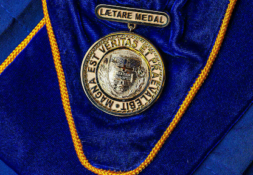
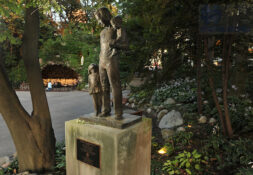
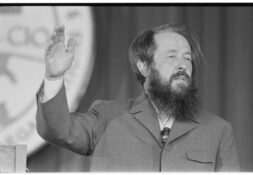
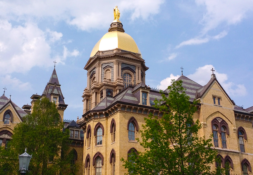
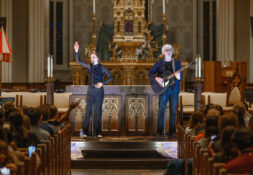

Leave a Reply